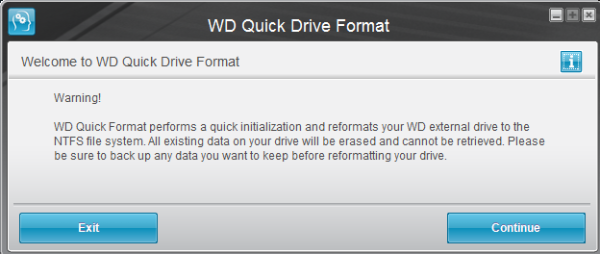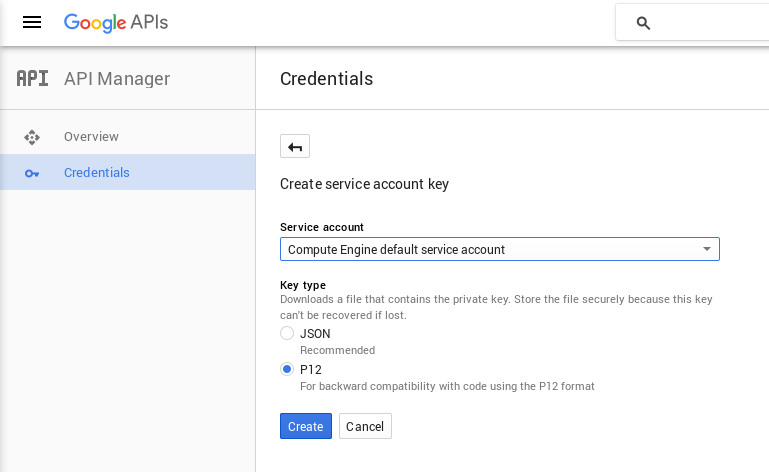Masalah Hard Disk Western Digital For Mac
- Masalah Hard Disk Western Digital For Mac Software
- Western Digital Disk Tools Download
- Masalah Hard Disk Western Digital For Mac Pro
About 'The volume does not contain a recognized file system' error Sometimes, when you plugged in an external hard drive, USB flash drive, SD card or some other storage devices into your Windows computer, Windows prompts 'You need to format the disk in drive G: before you can use it. Do you want to format it?' You might click Cancel to refuse to format the disk or card if there are some important data files. Then Windows will prompt 'Drive G: is not accessible. The volume does not contain a recognized file system. Please make sure that all required file system drivers are loaded and that the volume is not corrupted.'
This is how usually 'The volume does not contain a recognized file system' error occurs in Windows 10/8/7. To fix 'The volume does not contain a recognized file system' error in Windows 10/8/7 without losing data, you should first figure out why this error happens. As we know, the possible reason is the RAW file system which is not really a type of file system but presents a problem of your drive. It typically occurs when the file system type information is missing or inconsistent between several system tables. Such an issue often happens if you have ever forcibly unplugged your external hard drive from the computer without 'Safely removing' them first. Fix 'The volume does not contain a recognized file system' error and recover data After figuring out what results in 'The volume does not contain a recognized file system' error, fixing it without data loss becomes quite easy. All you need to do at this point is to find a software to get back the files, then format the device and copy the recovered data back to the device.
Offering powerful and easy RAW recovery solution, EaseUS allows you to recover your data from the RAW drive before formatting or /FAT32 file system. It is the best way to solve 'Drive is not accessible.
The volume does not contain a recognized file system' issue in Windows 10/8/7/Vista/XP and Windows Server 2012/2008/2003. Recover data from devices with 'The volume does not contain a recognized file system' error Step 1. Connect your device to PC. If you lost data on an external hard drive, USB or SD card, connect the device to your PC firstly.
Run the data recovery software and scan lost data. Run EaseUS Data Recovery Wizard on your PC. Select the device where you lost data under 'Hard Disk Drives', 'External Devices' or 'Specify a location'. Click 'Scan' to start scanning the lost data now.
Masalah Hard Disk Western Digital For Mac Software
Jump straight to the section you want with these quick links: -Choosing the best external hard drive or SSD for your Mac or PC is essential. As any designer or artist knows, it doesn't take long for creative files to start filling up the internal hard drive of your machine – but it's important to pick the right one, and there are a number of considerations to make before pulling out your wallet. First, a quick recap of the basics. An external hard drive or SSD (which stands for Solid State Drive) is a device that can be easily plugged into your machine, giving you almost-instant storage space, without having to prise open your computer and make complicated upgrades. Jump to: Not only does an HDD or SSD give you more capacity for large files, but because the devices are portable, they can be taken with you on the go and plugged into different machines – handy if you swap between PCs and Macs regularly. Also, in the event that something bad happens to your machine, your files will still be safe and accessible.
Right now, we think the overall best external hard drive for Mac and PC is the Western Digital My Passport 4TB. It offers the best balance of speed, reliability, portability and price. But there are many options out there – scroll down to see our full list of recommendations, and the best external hard drive prices too. Storage considerations There are a number of things to consider when looking for an external hard drive or SSD for your Mac or PC.
First, is storage. You'll want to make sure you buy an external storage device that has enough capacity for your needs – without paying for high capacities you'll never use. Around 500GB is a good sweet-spot for external storage, though you can buy smaller capacities, as well as larger ones at 1TB or greater. Hard drive vs SSD: which is best? Another consideration is whether to get an external storage device that uses a traditional hard drive, or one with an SSD.
Usually, external hard drives with traditional drives are more affordable and come in larger capacities. There are external SSDs that come with large capacities – but these can be expensive. SSDs are much faster than traditional hard drives, and because they don't have any mechanical or moving parts, they're generally more robust and smaller in physical size as well. So, if you want to store huge amounts of data while keeping prices low, an external hard drive is the way to go. But if speed is your top priority – for example, if you move a lot of large files, or want to run programs off the drive – then choose an SSD. The right connections The connection between the external hard drive and your Mac or PC is also important. The first generation rectangular USB-A ports are slowly being superseded by the newer, smaller reversible USB-C ports.
These are now found on all modern PCs, and Macs. Some high end PC and Macs, such as the new iMac and, come with USB-C ports that support Thunderbolt 3. This is the fastest external storage connection there is, and it provides very fast data transfer speeds, though Thunderbolt storage is considerably more expensive than plain old USB. Best external hard drives and SSDs for Mac and PC 01. Western Digital My Passport 4TB.
WD backup software is basic This is the latest generation of the Western Digital My Passport range of external hard drives to have landed, coming in sizes from 1TB to 4TB. It features cloud storage and 256-AES encryption, along with WD's own backup software. It also offers very good data transfer speeds.
And while it doesn't quite offer a similar speed to solid state drive devices, the Western Digital My Passport range finds a great balance between high storage capacities and quick file transfers. Samsung Portable SSD T5. Expensive The Samsung T5 SSD is a great performing storage device, reaching speeds up to 550 MB/sec, making the most of the USB 3.1 specification. It plugs directly into PCs and Macs with either a newer USB-C port or USB-A, is roughly the size of a matchbox and being a flash storage device, contains no moving parts, so can survive being dropped. External SSDs may cost considerably more than hard disks, but the extra money and faster speeds go a long way. You’ll be able to easily load edit and save 4K video directly on the T5, which can be very slow with a USB hard disk, you can install applications onto it, or even run an entire alternative operating system off it at full speed, if you’re so inclined. The downside is the pricing.
Western Digital Disk Tools Download
SSDs give you less capacity for more money, so we don’t recommend the T5 for backup. It’s better to have a bigger hard disk for that and use the T5 in more specialised situations that need all that lovely performance 03. G-Technology G-RAID with Thunderbolt 3. High price G-Technology has long been a favourite of Mac creative professionals, and no small part of this is the clever use of silver aluminium that perfectly matches Apple’s iMac casing, keeping desktop areas with a uniform appearance. The latest incarnation of its G-RAID dual hard disk Thunderbolt product isn’t just a start performer, capable of 440 MB/sec transfer rates in RAID 0, which is pretty incredible for hard disks, but it also gives you a few extras. There's an HDMI 2.2 port on the back, which routes a video signal for an external display over the G-RAID’s Thunderbolt 3 cable, which has plenty of bandwidth to spare even with the hard disk going at full speed.
Masalah Hard Disk Western Digital For Mac Pro
It also has a USB-C port to connect to Macs or PCs that lack Thunderbolt. Expect to pay a small fortune for the largest capacities, but thanks to the easy drive removal system, you could always buy a cheaper, lower capacity G-RAID and upgrade it with off-the-shelf hard disks yourself. Buffalo MiniStation Thunderbolt. Limited hard disk performance If you want to make use of your Thunderbolt port, then this Buffalo MiniStation Thunderbolt is a great option, as it provides twice the speeds of standard USB 3.0 drives. It's also not especially expensive compared to other Thunderbolt drives.
This is mainly down to the fact that it's a traditional hard drive, not an SSD, which means it's not quite as fast as it could be – though it will still give you an upgrade to your transfer speeds. Helpfully, the Buffalo MiniStation Thunderbolt also comes with a USB 3.0 port for connecting to computers that don't have a Thunderbolt port. Adata SD700 External SSD.
No USB Type-C The Adata SD700 will suit those looking for a rugged storage device that can provide ample capacity without costing too much. It performs superbly well and remains the only SSD we’ve seen that's IP68 rated. Thanks to the solid state drive that resides in this external hard drive, it's a lot faster than external drives that use traditional spinning hard drives – so you're getting great transfer speeds as well as rugged protection. It also comes in capacities up to 1TB, so you don't have to worry about missing out on storage space just because it uses an SSD. This Adata drive really does hit all the right notes. WD My Book Duo. Limited performance compared with Thunderbolt drives If you're looking for the absolute largest capacity external USB hard drive, then the WD My Book Duo Is the one to get, as it now goes all the way to 20TB.

If you don't mind sacrificing some of the ample storage space you can set the drives up in a RAID 1 array, so you have file backups of your files should one of the drives die. This is an excellent feature if you're going to use this device to back up irreplaceable data, such as your creative work, as it adds a level of protection in case things go wrong.
It provides two additional USB ports on the rear, so you can easily insert flash sticks. The device, which comes with two-year warranty, has 256-bit AES hardware encryption, and automatic backup software (WD SmartWare Pro). It's also worth noting that the enclosure used is fully serviceable and that WD ships the drive already pre-formatted for Windows users (NTFS), so you'll want to reformat it to work with your Mac. Read TechRadar's review. LaCie Rugged USB-C. Ugly orange casing Lacie’s rugged hard disk series is instantly recognisable from its orange casing, which is a rubber enclosure that keeps the disk safe from even medium-height drops up to 1.2m, along with your precious data.
According to Lacie it can apparently withstand the pressure of a one-ton car, and is resistant to rain. That makes it a great choice for content creation when you’re out and about, whether you’re participating in daredevil sports, travelling the world, just a bit paranoid or simply clumsy.
